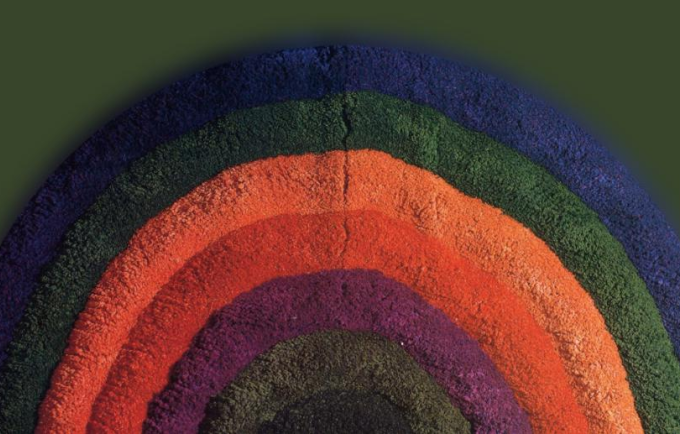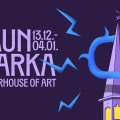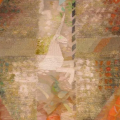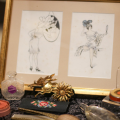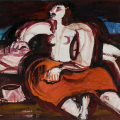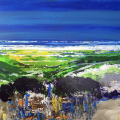The exhibition "Hand-crafts" invites to explore the legacy of several generations of Latvian textile artists from a 21st-century perspective.The exhibition is held in the collections of the Museum of Decorative Arts and Design, providing an insight into the development of Latvian textile art and revealing a diverse, colourful and vividly individual parade of artistic manuscripts.
"The title of the exhibition has several meanings. Firstly, in creating the exhibition, we have brought together a rich collection of textile artworks with the idea of showing the viewer a range of original works that have not been seen in exhibitions for years. Secondly, we wanted to put the exhibition in a historical perspective and focus on the beginnings of modern textile art," says Rūta Rinka, Curator of Textile and Leather Art at the Museum of Decorative Arts and Design (MADD).
The exhibition is inspired by the garbarkha or Nordic technique, which has its origins in the work of handicraftswomen and cottage weavers. Originally used to make rugs and warm fringed wall hangings, the technique eventually became an integral means of artistic expression in the creation of modern contemporary textile works. It not only varies the surface texture of textiles, but also highlights the pattern of the composition, creates three-dimensional volumes, achieves variations in the play of light and colours, and expresses the creative intention more sensitively.
In Latvia, at the beginning of the 20th century, weaving skills could be learnt at various handicraft and weaving courses. A year later, she took part in an exhibition of Latvian artists' work with several textiles woven in the garbarkh technique. Etolena herself stayed and worked in Latvia for a short period of time, but her skills in textile art continued to be promoted by her students. It was probably then that the participants were first introduced to the weaving technique so popular in the Nordic countries. The technique was subsequently taught in vocational craft and applied arts schools.
As early as the 20th century, weaving was taught in the schools of weaving. In the 1920s, Milda Klebach's workshop offered modern rugs and other room furnishings in the garbarkh technique. Elga Kivicka opened a similar workshop. In the 1920s and 1930s, Jūlijs Madernieks and Arvīds Dzērvītis also drew carpets and wall hangings in the garbārksha technique.
Art weaving developed alongside Latvian professional applied art and the axiom of comprehensive environmental and spatial design, put forward at the beginning of the 20th century, where textiles were integrated into a unified interior composition.
In the late 1960s and early 1970s, textile art began to flourish, with young artists who had recently graduated from the textile department of the Academy of Fine Arts experimenting with textile materials, techniques and spatiality, turning to the creation of reliefs and large-scale textile objects. New possibilities of artistic expression are being found, how to use ancient handicraft and weaving techniques to create contemporary decorative works. Alongside ornamental compositions, works with a decorative and at the same time abstract conception were increasingly created. Textile artists often used a combination of several techniques to realise their ideas, including Nordic techniques. The fringe could cover almost the entire area of the composition, or become a small but significant accent in the smooth surface of the tapestry.
The collection on display also highlights other weaving skills that are less well known and unused today - works made in the most common and time-honoured form of plain weaving, where the soft, fluffy unspun wool is used to create striking, modern textiles. Several wall quilts are made in the now forgotten technique of short fringe.
In the late 1960s, the architect and painter Georgs Barkāns (1925-2010) also turned to textiles, and it is in his textiles that the tapestry-style woven surfaces are often complemented with Nordic fringes. The exhibition features the most outstanding textile works in the DMDM collection - textiles by Vera Viduka (1916-1994), Milda Klēbah (1906-1975), Erna Oshele (1915-2005), Ella Ūdre-Dviele (1904-1990), Zenta Logina (1908-1983) and other artists.
Translated with www.DeepL.com/Translator (free version)

